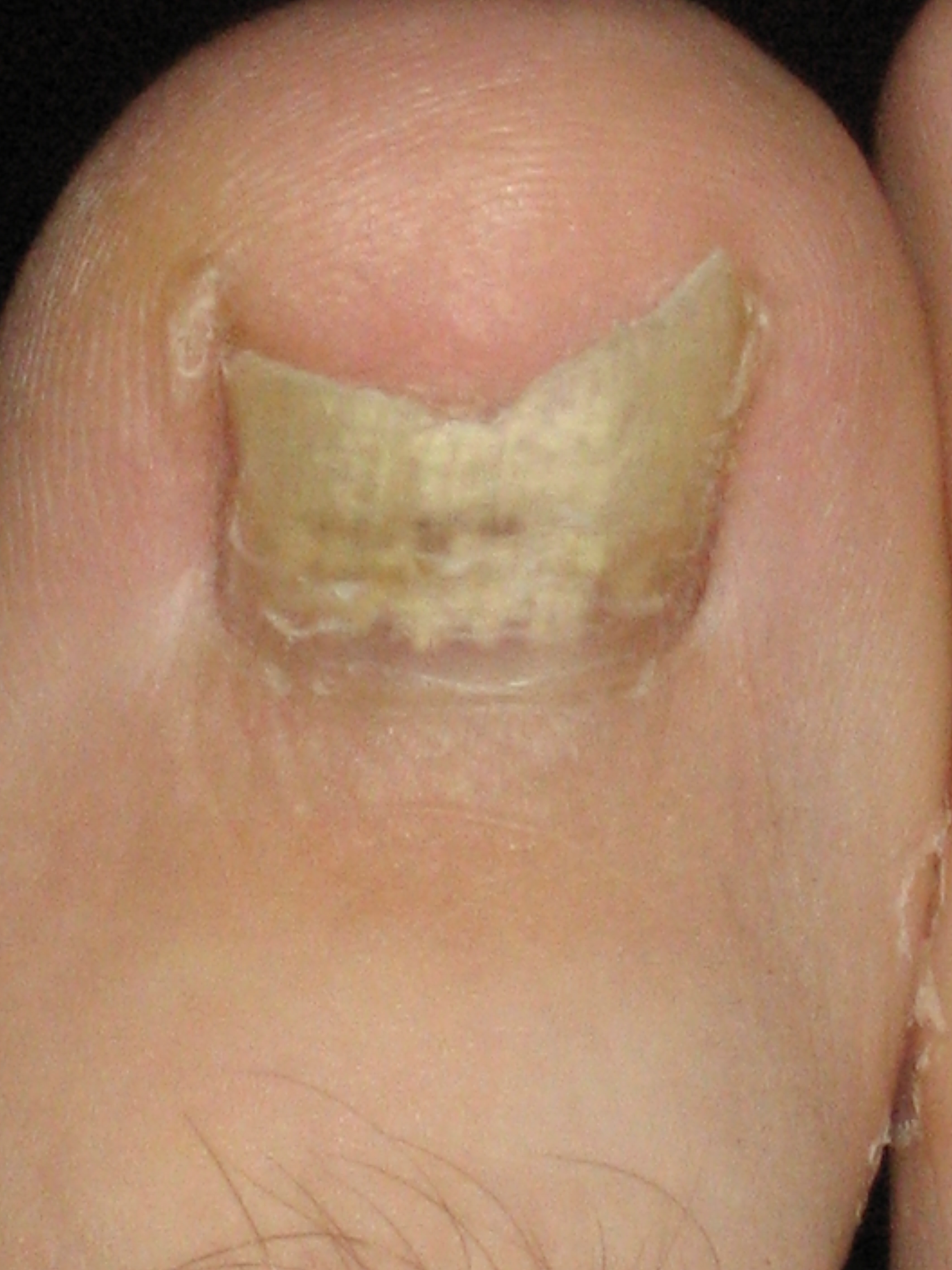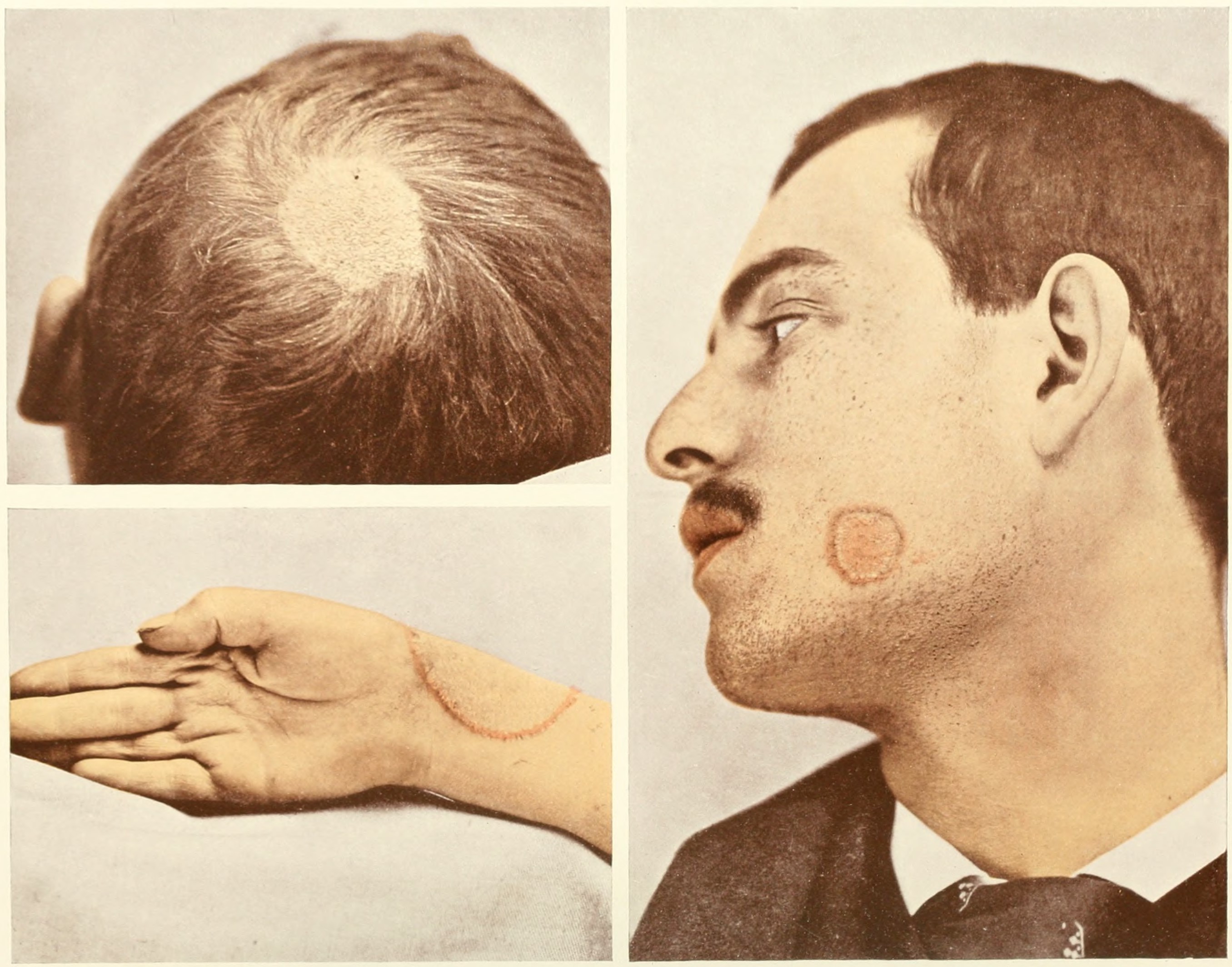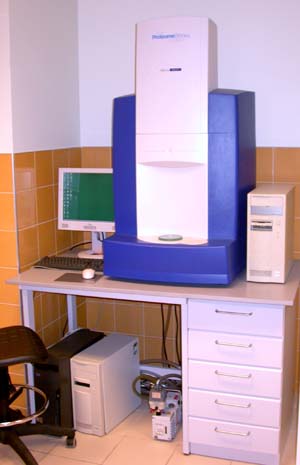|
Trichophyton Interdigitale
''Trichophyton interdigitale'' is a clonal line within sexual species '' T. mentagrophytes''. It causes onychomycosis and tinea pedis Dermatophytosis, also known as tinea and ringworm, is a fungal infection of the skin (a dermatomycosis), that may affect skin, hair, and nails. Typically it results in a red, itchy, scaly, circular rash. Hair loss may occur in the area aff ... in humans, and has never been isolated from animals. ''Trichophyton interdigitale'' isolates cannot be reliably discriminated from ''T.mentagrophytes'' by cultural techniques or MALDI-TOF mass spectrometry, and therefore ITS region DNA sequencing is recommended. Critics ''Trichophyton interdigitale'' is defined by its capability of transmission between human hosts and clonal way of reproduction. However, there is at least one another anthropophilic clonal line within '' T. mentagrophytes'', phylogenetically unrelated to ''T. interdigitale''. References Arthrodermataceae Fungi described in ... [...More Info...] [...Related Items...] OR: [Wikipedia] [Google] [Baidu] |
Fungus
A fungus (: fungi , , , or ; or funguses) is any member of the group of eukaryotic organisms that includes microorganisms such as yeasts and mold (fungus), molds, as well as the more familiar mushrooms. These organisms are classified as one of the kingdom (biology)#Six kingdoms (1998), traditional eukaryotic kingdoms, along with Animalia, Plantae, and either Protista or Protozoa and Chromista. A characteristic that places fungi in a different kingdom from plants, bacteria, and some protists is chitin in their cell walls. Fungi, like animals, are heterotrophs; they acquire their food by absorbing dissolved molecules, typically by secreting digestive enzymes into their environment. Fungi do not photosynthesize. Growth is their means of motility, mobility, except for spores (a few of which are flagellated), which may travel through the air or water. Fungi are the principal decomposers in ecological systems. These and other differences place fungi in a single group of related o ... [...More Info...] [...Related Items...] OR: [Wikipedia] [Google] [Baidu] |
Ascomycota
Ascomycota is a phylum of the kingdom Fungi that, together with the Basidiomycota, forms the subkingdom Dikarya. Its members are commonly known as the sac fungi or ascomycetes. It is the largest phylum of Fungi, with over 64,000 species. The defining feature of this fungal group is the "ascus" (), a microscopic sexual reproduction, sexual structure in which nonmotile spores, called ascospores, are formed. However, some species of Ascomycota are Asexual reproduction, asexual and thus do not form asci or ascospores. Familiar examples of sac fungi include morels, truffles, yeast#Beer, brewers' and bakers' yeast, Xylaria, dead man's fingers, and cup fungi. The fungal symbionts in the majority of lichens (loosely termed "ascolichens") such as ''Cladonia'' belong to the Ascomycota. Ascomycota is a monophyletic group (containing all of the descendants of a common ancestor). Previously placed in the Basidiomycota along with asexual species from other fungal taxa, asexual (or Teleomorph, ... [...More Info...] [...Related Items...] OR: [Wikipedia] [Google] [Baidu] |
Eurotiomycetes
Eurotiomycetes is a large class of ascomycetes with cleistothecial ascocarps within the subphylum Pezizomycotina, currently containing around 3810 species according to the Catalogue of Life. It is the third largest lichenized class, with more than 1200 lichen species that are mostly bitunicate in the formation of asci. It contains most of the fungi previously known morphologically as " Plectomycetes". Systematics and phylogeny Internal relationships The class Eurotiomycetes was circumscribed in 1997 by Swedish mycologists Ove Erik Eriksson and Katarina Winka. At that time it only contained the order Eurotiales, which together with the next order added, Onygenales, form a monophyletic group comprising most of the fungi in "Plectomycetes", a group no longer in use that unified fungi under exclusively morphological characteristics. As more orders were added to Eurotiomycetes, the first two along with Arachnomycetales became constrained to the first subclass, Eurotiomycetida ... [...More Info...] [...Related Items...] OR: [Wikipedia] [Google] [Baidu] |
Onygenales
The Onygenales are an order of fungi in the class Eurotiomycetes and division Ascomycota. The order's last common ancestor is estimated to have lived 150 million years ago. Onygenales can consume and break down keratin, the main component of the outer layer of skin. They are primarily found on animals, droppings, and areas frequented by animals. Many are dimorphic, and can change from mold to yeast form depending on their environment. Many onygenalean fungi are pathogen In biology, a pathogen (, "suffering", "passion" and , "producer of"), in the oldest and broadest sense, is any organism or agent that can produce disease. A pathogen may also be referred to as an infectious agent, or simply a Germ theory of d ...s. One species, '' Trichophyton rubrum'', is the primary cause of athlete's foot. This order also includes the '' Coccidioides'' implicated in Valley fever. The Onygenales are important as emerging human pathogens because of the rising rates of immunosuppress ... [...More Info...] [...Related Items...] OR: [Wikipedia] [Google] [Baidu] |
Arthrodermataceae
The Arthrodermataceae are a family of fungi containing nine dermatophyte genera — '' Epidermophyton'', '' Microsporum'', '' Nannizzia'', ''Trichophyton ''Trichophyton'' is a genus Genus (; : genera ) is a taxonomic rank above species and below family (taxonomy), family as used in the biological classification of extant taxon, living and fossil organisms as well as Virus classification#ICTV c ...'', ''Paraphyton'', ''Lophophyton'', ''Guarromyces'', ''Ctenomyces'' and ''Arthroderma''. References External links''Trichophyton'' spp.at Doctor FungusMycology Unit at the Adelaide Women's and Children's Hospital * Parasitic fungi Onygenales Ascomycota families {{parasite-stub ... [...More Info...] [...Related Items...] OR: [Wikipedia] [Google] [Baidu] |
Trichophyton
''Trichophyton'' is a genus Genus (; : genera ) is a taxonomic rank above species and below family (taxonomy), family as used in the biological classification of extant taxon, living and fossil organisms as well as Virus classification#ICTV classification, viruses. In bino ... of fungus, which includes the parasitic varieties that cause tinea, including athlete's foot, ringworm, jock itch, and similar infections of the nail, beard, skin and scalp. Trichophyton fungi are molds characterized by the development of both smooth-walled macro- and microconidia. Macroconidia are mostly borne laterally directly on the hyphae or on short pedicels, and are thin- or thick-walled, clavate to fusiform, and range from 4 to 8 by 8 to 50 μm in size. Macroconidia are few or absent in many species. Microconidia are spherical, pyriform to clavate or of irregular shape, and range from 2 to 3 by 2 to 4 μm in size. Species and their habitat preference According to current classificati ... [...More Info...] [...Related Items...] OR: [Wikipedia] [Google] [Baidu] |
Henry Priestly
Henry may refer to: People and fictional characters * Henry (given name), including lists of people and fictional characters * Henry (surname) * Henry, a stage name of François-Louis Henry (1786–1855), French baritone Arts and entertainment * ''Henry'' (2011 film), a Canadian short film * ''Henry'' (2015 film), a virtual reality film * '' Henry: Portrait of a Serial Killer'', a 1986 American crime film * ''Henry'' (comics), an American comic strip created in 1932 by Carl Anderson * "Henry", a song by New Riders of the Purple Sage Places Antarctica * Henry Bay, Wilkes Land Australia *Henry River (New South Wales) *Henry River (Western Australia) Canada * Henry Lake (Vancouver Island), British Columbia * Henry Lake (Halifax County), Nova Scotia * Henry Lake (District of Chester), Nova Scotia New Zealand * Lake Henry (New Zealand) * Henry River (New Zealand) United States * Henry, Illinois * Henry, Indiana * Henry, Nebraska * Henry, South Dakota * Henry County (disambigu ... [...More Info...] [...Related Items...] OR: [Wikipedia] [Google] [Baidu] |
Trichophyton Mentagrophytes (257 19) From A Microculture And An Infected Hair
''Trichophyton mentagrophytes'' is a species in the fungal genus ''Trichophyton''. It is one of three common fungi which cause ringworm in companion animals. It is also the second-most commonly isolated fungus causing tinea infections in humans, and the most common or one of the most common fungi that cause zoonotic skin disease. ''Trichophyton mentagrophytes'' is frequently isolated from dogs, cats, rabbits, guinea pigs and other rodents, though at least some genetic variants possess the potential of human-to-human transmission, e.g. Type VII and Type VIII. As of 2024 it is an emerging STD in men who have sex with men and in sex workers of all genders. Nomenclature Along with closely related '' T. interdigitale'', the species has been traditionally treated as a part of polyphyletic assemblage, named "''T. mentagrophytes'' sensu lato". From 1999 to 2017 the two species have been collectively referred to as ''T. interdigitale'', while the name "''T. mentagrophytes''" has been used ... [...More Info...] [...Related Items...] OR: [Wikipedia] [Google] [Baidu] |
Trichophyton Mentagrophytes
''Trichophyton mentagrophytes'' is a species in the fungal genus '' Trichophyton''. It is one of three common fungi which cause ringworm in companion animals. It is also the second-most commonly isolated fungus causing tinea infections in humans, and the most common or one of the most common fungi that cause zoonotic skin disease. ''Trichophyton mentagrophytes'' is frequently isolated from dogs, cats, rabbits, guinea pigs and other rodents, though at least some genetic variants possess the potential of human-to-human transmission, e.g. Type VII and Type VIII. As of 2024 it is an emerging STD in men who have sex with men and in sex workers of all genders. Nomenclature Along with closely related '' T. interdigitale'', the species has been traditionally treated as a part of polyphyletic assemblage, named "''T. mentagrophytes'' sensu lato". From 1999 to 2017 the two species have been collectively referred to as ''T. interdigitale'', while the name "''T. mentagrophytes''" has been ... [...More Info...] [...Related Items...] OR: [Wikipedia] [Google] [Baidu] |
Onychomycosis
Onychomycosis, also known as tinea unguium, is a fungal infection of the nail. Symptoms may include white or yellow nail discoloration, thickening of the nail, and separation of the nail from the nail bed. Fingernails may be affected, but it is more common for toenails. Complications may include cellulitis of the lower leg. A number of different types of fungus can cause onychomycosis, including dermatophytes and ''Fusarium''. Risk factors include athlete's foot, other nail diseases, exposure to someone with the condition, peripheral vascular disease, and poor immune function. The diagnosis is generally suspected based on the appearance and confirmed by laboratory testing. Onychomycosis does not necessarily require treatment. The antifungal medication terbinafine taken by mouth appears to be the most effective but is associated with liver problems. Trimming the affected nails when on treatment also appears useful. There is a ciclopirox-containing nail polish, but there ... [...More Info...] [...Related Items...] OR: [Wikipedia] [Google] [Baidu] |
Tinea Pedis
Dermatophytosis, also known as tinea and ringworm, is a fungal infection of the skin (a dermatomycosis), that may affect skin, hair, and nails. Typically it results in a red, itchy, scaly, circular rash. Hair loss may occur in the area affected. Symptoms begin four to fourteen days after exposure. The types of dermatophytosis are typically named for area of the body that they affect. Multiple areas can be affected at a given time. About 40 types of fungus can cause dermatophytosis. They are typically of the '' Trichophyton'', '' Microsporum'', or '' Epidermophyton'' type. Risk factors include using public showers, contact sports such as wrestling, excessive sweating, contact with animals, obesity, and poor immune function. Ringworm can spread from other animals or between people. Diagnosis is often based on the appearance and symptoms. It may be confirmed by either culturing or looking at a skin scraping under a microscope. Prevention is by keeping the skin dry, not w ... [...More Info...] [...Related Items...] OR: [Wikipedia] [Google] [Baidu] |
Matrix-assisted Laser Desorption/ionization
In mass spectrometry, matrix-assisted laser desorption/ionization (MALDI) is an ionization technique that uses a laser energy-absorbing matrix to create ions from large molecules with minimal fragmentation. It has been applied to the analysis of biomolecules (biopolymers such as DNA, proteins, peptides and carbohydrates) and various organic molecules (such as polymers, dendrimers and other macromolecules), which tend to be fragile and fragment when ionized by more conventional ionization methods. It is similar in character to electrospray ionization (ESI) in that both techniques are relatively soft (low fragmentation) ways of obtaining ions of large molecules in the gas phase, though MALDI typically produces far fewer multi-charged ions . MALDI methodology is a three-step process. First, the sample is mixed with a suitable matrix material and applied to a metal plate. Second, a pulsed laser irradiates the sample, triggering ablation and desorption of the sample and matrix material ... [...More Info...] [...Related Items...] OR: [Wikipedia] [Google] [Baidu] |



